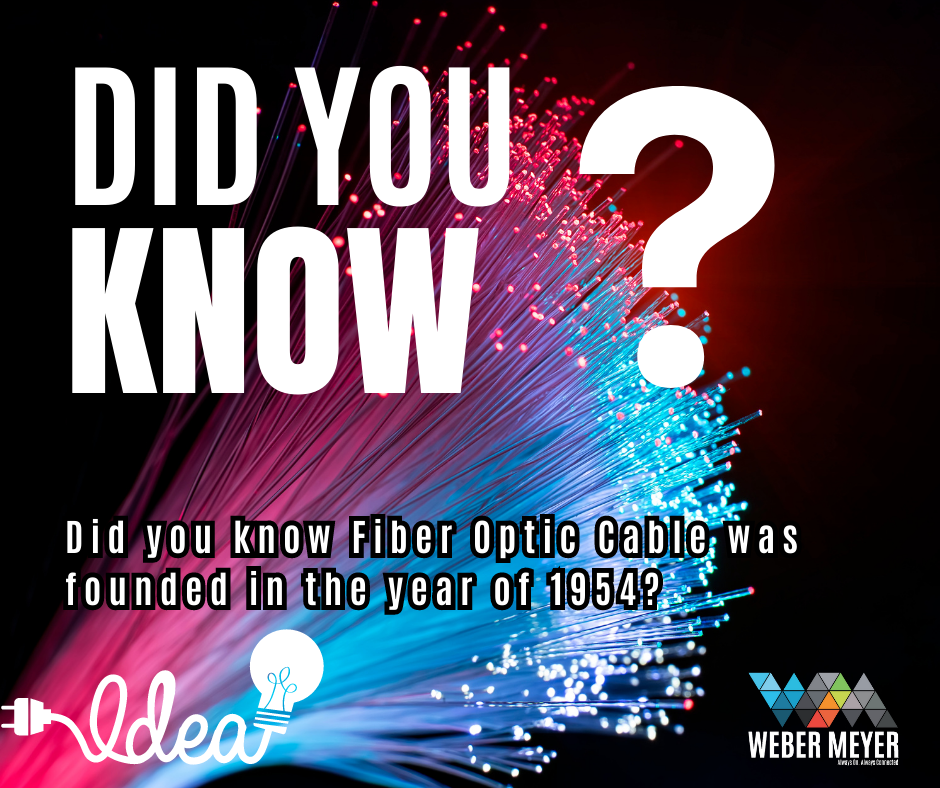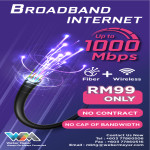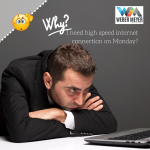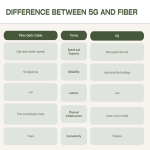
The Invention of Fiber Optic Cables: Revolutionizing Data Transmission
Discover the fascinating journey of fiber optic cables, a groundbreaking technology that revolutionized global communication and data transmission. From early concepts proposed in the 19th century to practical implementation in the 1970s, follow the contributions of visionary scientists like John Tyndall and Narinder Singh Kapany. Learn how Charles K. Kao's groundbreaking discovery paved the way for low-loss optical fibers, leading to the first commercial installations by General Telephone and Electronics Corporation. Explore the remarkable advancements that transformed fiber optics into the backbone of the internet, telecommunication systems, and more, connecting the world like never before.

Benefits of Fiber Optic cable
Fiber optic cable is the future of data transmission technology. It uses light to send data over long distances at speeds much faster than copper cable. It also has higher bandwidth, longer distance, more security, and more reliability. Fiber optic cable is widely used in various fields and harsh environments. Learn more about the advantages of fiber optic cable over copper cable in this article.

Fiber vs 5G
Fiber and 5G are two distinct technologies that serve unique purposes in the realm of telecommunications and internet connectivity. Each possesses its own set of strengths and weaknesses, and together, they form a powerful combination in building a robust and efficient communication infrastructure. Fiber optic technology stands out for its exceptional speed and capacity, capable of delivering data transfer rates of several gigabits per second and beyond. Its reliability, immune to electromagnetic interference, makes it an ideal choice for critical applications demanding constant uptime. Additionally, fiber's low latency makes it well-suited for real-time applications like online gaming and video conferencing. However, the process of laying fiber optic cables involves significant investment and effort, which can be time-consuming and expensive, particularly in densely populated areas. On the other hand, 5G technology introduces a wireless paradigm, operating over radio waves without the need for physical cables. It promises faster speeds than its predecessors, and its reduced latency enhances responsiveness for data-intensive tasks. With its scalability and ability to handle a massive number of connected devices simultaneously, 5G is poised to revolutionize the Internet of Things (IoT) and smart city applications. Nevertheless, 5G's coverage challenges due to shorter signal ranges require a dense network of small cells, making deployment costly and complex. Despite their differences, fiber and 5G complement each other in the telecommunications landscape. Fiber serves as the backbone infrastructure, efficiently carrying data from 5G base stations to the core network, ensuring high-speed and reliable connections for the wireless network. While fiber excels in providing fixed-line broadband connectivity to homes and businesses, 5G shines in offering seamless mobility and high-speed internet access on the go. Geographical considerations further emphasize the complementary nature of these technologies. In urban areas with existing infrastructure and high demand for high-speed internet, fiber remains a preferred choice. In contrast, 5G becomes a more feasible option for connecting remote or rural areas where laying fiber is impractical or cost-prohibitive. In conclusion, both fiber and 5G are vital components of modern communication networks, each playing critical roles in advancing connectivity. While fiber excels in delivering ultra-fast and reliable connections over long distances, 5G brings wireless mobility and the potential to connect numerous devices simultaneously. Embracing their complementary roles, these technologies collaborate to build a comprehensive and efficient communication infrastructure for the future

Is fibernet better than broadband
In this article, we delve into the intriguing world of internet connectivity, exploring the contrasting realms of fibernet and broadband. Unraveling the intricacies of these technologies, we present a comprehensive comparison of their speed, reliability, and suitability for different users. Whether you're a tech-savvy user seeking ultra-fast connections or a household looking for a reliable online experience, our in-depth analysis will guide you in making the right choice. Join us on this enlightening journey to understand the key differences between fibernet and broadband, ensuring you embark on a seamless and rewarding internet experience.

Breaking Barriers: Embrace the Future with Weber Meyer's 1000Mbps Internet Speeds in Malaysia
Experience the future of connectivity in Malaysia with Weber Meyer's groundbreaking 1000Mbps internet speeds. Break barriers, embrace seamless streaming, lag-free gaming, and effortless video conferencing. Unlock new possibilities for businesses, education, and entrepreneurship. Stay ahead in the digital age and explore a connected Malaysia with Weber Meyer. With blazing-fast internet speeds, Malaysians can enjoy uninterrupted online experiences and tap into the full potential of a connected world.

Why do I need a high speed connection on Monday?
Why do I need a high speed connection on Monday?

Revolutionizing Internet Speeds in Malaysia
Discover Weber Meyer's Lightning-Fast 1000Mbps Connection




